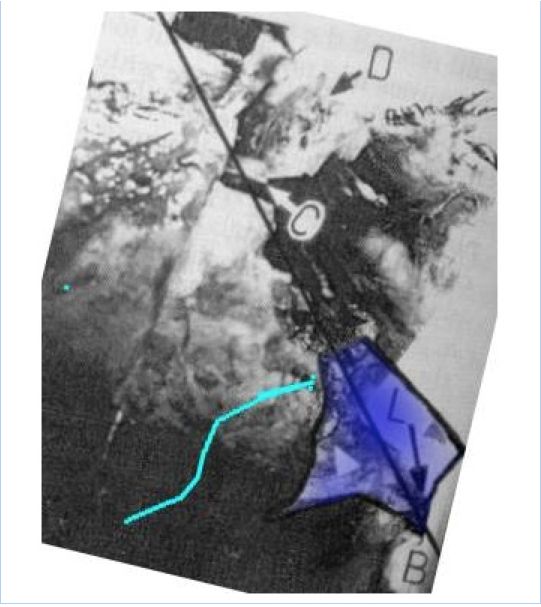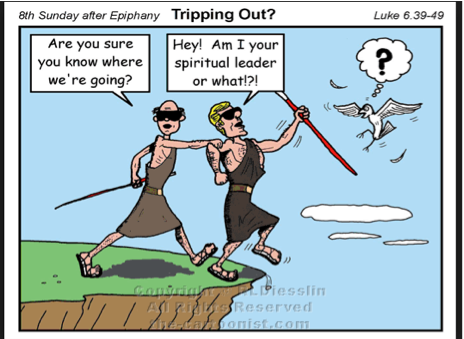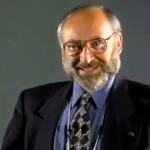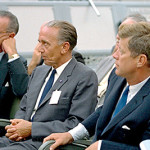
The (JFK) Windmills of Pat Speer:
A Sorrowful Knight Errant[1] in the Land of “Education”
Pen Name: Miguel de Cervantes Saavedra[2]
March 12, 2016
NOTE: This discussion responds to messages posted via the online Education Forum[3] (January 31 through February 22, 2016). Most of these messages relate to our questing knight (ironically named Speer), hereafter known as Don Quixote.[4] The rather disjointed sequence seen here merely follows the trail laid down on the Forum. Questions in red are tilting items provided for our knight (to attempt) to attack.
Aldonza: “All right, you’re a squire. How does a squire squire?”
Sancho Panza: “Well first, I ride behind him. Then he fights. And then I pick him up off the ground.”
——
Panza: “Many a man has gone to bed feeling well, only to wake up the next morning and find himself dead.”
Quixote: “That’s a proverb.”
Panza: “Yes, Your Grace.”
Quixote: “I don’t approve of them.”
——
Cervantes: “Finally, from so little sleeping and so much reading, his brain dried up and he went completely out of his mind.”
QUIXOTE: Dr. Mantik has long held that the Harper Fragment (HF) sprang from the middle of the back of the head.
CERVANTES: HF did arise from the upper occipital bone, but the large visible defect (in the occiput) was centered to the right of midline. (See the first and second figures below.) The entire posterior defect consisted not only of HF, but also of missing bone superior to HF, and also the hinged bone fragment immediately to the right of HF—particularly when it swung outward.[5] Therefore it is misleading to equate HF to the entire occipital defect. Unfortunately, nearly everyone makes this mistake.
QUIXOTE: These measurements and descriptions (of the large skull defect) are almost certainly for the wound as observed after the scalp was peeled back.
CERVANTES: Quixote offers no supporting data for this argument. On the other hand, if Humes had performed an illicit examination before the official autopsy (as now seems highly likely), Quixote’s comments might even be deemed to support such a scenario, although that is probably not what he intended.
PANZA: I’m starting to become Mantik-depressive.[6]
CERVANTES: You’re just playing with Mantik-semantics.
QUIXOTE: No large scalp lacerations in the occipital region were noted at the autopsy.
CERVANTES: The wound, however, did extend into the occiput. The official autopsy report, after all, explicitly states that, and so does Finck’s report (to Gen. Blumberg), and Boswell’s sketch actually demonstrates it. Ebersole also cited the occipital defect to both the HSCA and to others, including a recorded conversation with Mantik.
PANZA: I don’t know how it’s possible to prove any conclusion about JFK’s wounds.
CERVANTES: Well, how about looking at the X-rays, as discussed and described in Mantik’s e-book?[7] Do you trust the X-rays to show where bone was missing? If so, there is no need to be so pessimistic.
PANZA: If a genie gave me one wish as to the assassination, I would wish to see complete photographs of JFK’s head and upper body taken at Parkland.
CERVANTES: Well, we do have X-rays taken at Bethesda. Do you not trust those, especially to demonstrate where bone was missing?
QUIXOTE: The wound was centered on the top right side of the head, and not far back on the head.
CERVANTES: Based on the X-rays, as well as several observant witnesses, that is correct. However, the most visible part of the wound (at Parkland) lay in the upper occiput, where so many witnesses describe it. Some observers merely failed to observe the full extent of the hole, which actually extended (according to the X-rays) all the way to the hairline at the forehead. This final skull defect was the composite result of three headshots,[8] including an oblique shot that entered near the right ear, and then exited in the right upper occiput. This oblique shot caused the obvious posterior hole seen by so many. Although the Parkland doctors did not pretend to fully explore the head wound, they often described it as extensive, including the top right, side, and back of the head, nearly to the external occipital protuberance (EOP). Boswell’s sketch is consistent with this. On the other hand, when Quixote claims that the wound was right temporal (but not occipital), he has chosen to disagree directly with the autopsy report, and with many, many witnesses, and even with the X-rays. And does Quixote acknowledge that the wound even extended into the frontal bone, all the way to the hairline—as both Mantik and Fitzpatrick have reported?[9] Even neurosurgeon Dr. Clark clearly stated that the wound extended posteriorly to just above the EOP—where he saw cerebellum, as did a total of nine Parkland physicians.[10] Does Quixote truly doubt all nine of these physicians?
CERVANTES: Then there is the curious case of Kenneth Salyer,[11] who Quixote likes to cite. Has Quixote actually read Salyer’s autobiography,[12] in which he offers these recollections?
The whole right side [emphasis added] of Kennedy’s cranium had been blown away by a gunshot blast. Much of the right side [emphasis added] of his brain had been destroyed as well, and the remainder was exposed by a gaping hole in his skull.
Does that sound like the wound abruptly stopped short of the right occiput and spared the entire occipital lobe and cerebellum? Of course, Salyer has admitted that he was standing on the wrong side of the table—and did not get an optimal view of the right-sided wound. See Ms. Cranor’s pointed comments on the Forum about this embarrassing admission.
PANZA: The only way I could get to the bottom of it was to start from scratch, that is, by reading every bit of testimony…and by reading forensic journals.
CERVANTES: Although that is laudable, why not also review the X-rays carefully? There are, after all, fairly good copies in the public domain. You might even read Dr. Fitzpatrick’s report.[13]
PANZA: I appreciate Michael Walton’s GIF published above and I’m pleased to see that many researchers are starting to come around to the scenario as outlined by both Ms. Cranor and Quixote.
The (JFK) Windmills of Pat Speer
CERVANTES: Ms. Cranor has outlined various possibilities to show interesting, albeit conflicting, patterns—but she does not endorse any of them. As for the pattern she described in “The Third Wound,”[14] she has said that such a scenario would result in damage very different from that seen in the extant X-rays. And, regarding the beveled wound in the GIF, it should be emphasized that the autopsy report does not mention it—and when Humes was asked (by the ARRB) to identify the entry site he again ignored the beveled site.[15] The major problem with the GIF is its orientation of the mystery photo (F8). That photo has now been properly oriented—via the stereo viewing of Mantik, Chesser, and Robert Kirschner, the forensic pathologist for the ARRB (Assassination Records Review Board).[16] That GIF has the wrong orientation. The correct orientation is shown here:[17]
QUIXOTE: I believe the autopsy photos are authentic.
CERVANTES: The brain photos show nearly intact frontal brain on both left and right sides. The lateral X-rays show nearly zero frontal brain on both sides—confirmed repeatedly by optical density data. Where have you addressed this deep paradox? And what do you really make of Stringer’s statements about not taking the brain photos? Why do you ignore this profoundly troubling matter? And who actually took those brain photos?
QUIXOTE: Most Parkland witnesses ended up saying they thought the autopsy photos were legit.
CERVANTES: Actually what they said was something like this: If the scalp had been pulled down to cover the hole then, sure, the photos were legitimate. Short of that assumption though, why did so many Parkland MDs initially fail to recognize the autopsy photos?[18]
QUIXOTE: As for myself, I am 99.99% convinced the autopsy photos and x-rays prove there was more than one shooter. As a consequence, I strongly doubt they’re fake.
CERVANTES: How then do you explain that 6.5 mm fragment?[19] In Mantik’s critique of your work,[20] he pointed out that your explanation of the 6.5 mm object leads to a profound paradox: If the Outer Table Fragment (which lies on the posterior skull on the lateral X-ray) does not correlate (in 3D) to the 6.5 mm object (on the AP X-ray), then where do we see the correlate of the Outer Table Fragment on the AP X-ray? This is the most dumbfounding—and straightforward—question that Quixote has evaded. After all this time, when will he finally confront that paradox? And, what does he really think about optical density data (in general)?[21]
QUIXOTE: I question the memory of all witnesses.
CERVANTES: This is unnecessary bravado. It is well established that most witnesses are reliable if three conditions are met: 1) recollection is prompt, 2) the items recalled are significant, and 3) the items are not too complex. Why are you needlessly confounding this issue?
PANZA: Without their testimony [i.e., the Parkland doctors], there is no massive hole in the back of JFK’s head.
CERVANTES: You seem not to have looked at JFK’s X-rays, or even heard of the corroborating reports (for such a massive hole) of eight physicians at Bethesda.[22] Then there are the vanishing lambdoid suture lines at the back of the skull—on both sides. Both Mantik and Dr. Chesser have noted that missing sutures at these sites strongly support missing bone in the upper occiput—on both left and right sides.[23] See the Appendix here by Chesser.
QUIXOTE: Mantik claims that HF came from low on the back of the head.
CERVANTES: Actually his work denies that. Groden and others initially thought so, but Mantik disagrees. He places HF into the upper occiput. (See the figure below, where H represents HF in the upper occiput.)[24]
QUIXOTE: Well, Mantik really blundered by not closely comparing the inner surface of HF to the inner surface of upper occipital bone.
CERVANTES: Amazingly, your argument depends not on an actual photo of the inner surface of the skull, but rather on an artist’s drawing, as shown here (on the right):
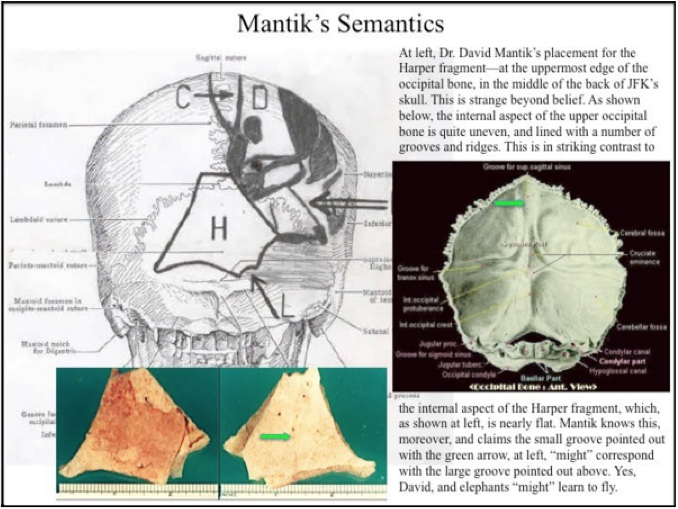
How can a generic drawing possibly be definitive—particularly when a unique patient is under discussion?[25] On the other hand, Mantik has offered an actual photo of the inner surface of an authentic skull:
This is the interior of the occipital bone for the skull that Mantik purchased. Several occipital foramina are outlined with rectangles here. A faint vascular groove (red arrow) in parietal bone extends nearly to the lambdoid suture (yellow arrows), but does not quite reach occipital bone. In Mantik’s reconstruction, the Harper fragment lies entirely superior to the internal occipital protuberance (violet arrow). The sulcus for the superior sagittal sinus is identified by the blue arrow. This sulcus may also be visible on the inner surface of HF. The sulcus for the transverse sinus is identified by the cyan arrow. On Mantik’s actual skull that sulcus is actually quite deep but that 3D impression is lost in this 2D photograph. The superior sagittal sinus on HF may also have suffered from that loss of 3D depth. Of course, the three Dallas pathologists (Cairns, Harper, and Noteboom) did not have to rely on 2D photographs, so their observations might well be more trustworthy. Furthermore, and quite convincingly, a pathologist (Cairns–who actually held this bone in his hand) noted “inner markings that run around the base of the skull” on the inside of HF. This can only mean vascular grooves (in occipital bone), or else the sulcus for the superior sagittal sinus, which by definition would mean occipital bone. How do you explain Cairns’s comments—and why would all three pathologists agree on occipital bone? Was it because they had not seen that artist’s drawing?
There is one more tantalizing issue here: JFK had Addison’s disease—for many years.[26] Take a look at this online site:[27]
Chronic use of steroids (e.g., JFK) is often associated with osteoporosis. Not only can bones become thinner, but actual bone remodeling can occur. Although the professional literature strongly suggests that osteoporosis is not likely to occur in the skull, the critical question seems unanswered: Can bone remodeling, even without overt osteoporosis, occur in the skull? To be more specific: Could this mechanism have decreased the prominence of JFK’s sulci in the upper occipital bone?
QUIXOTE: You [presumably meaning Mantik—even though he was not on the forum!] reach out to your longtime co-horts (sic), such as Greg Burnham and “Mili” Cranor, and ask their help in discrediting this wise-ass (sic). That’s my latest conspiracy theory, anyhow.
CERVANTES: Mantik assures me that he did not even know about this specific discussion until a few days ago. Again, you are tilting at windmills—this time at windmills of your own mind.[28]
CERVANTES: By the way, after all of these years, where have you provided your own reconstruction of the skull? That should, after all, have been one of the first steps in your argument.
QUIXOTE: The witnesses to the shooting (Newmans, Zapruder, Hudson) overwhelmingly described the head wound as being by the temple, or right top of the head.
CERVANTES: I notice that your list includes only witnesses who were located ahead of JFK. Do you think that is fair? In any case, your three witnesses are accepted—but they are only part of the story. Recall that old Indian tale of the Blind Men and the Elephant.
PANZA: Does Quixote cherry pick witness testimony? Well, who doesn’t?
CERVANTES: That’s an embarrassing retort. What do you make of Gary Aguilar’s list of occipital witnesses?[29] Note that they do not exclude a parietal wound, but they are astoundingly consistent about an occipital wound. That completely agrees with what we now know about witness reliability. They promptly recalled an event that was simple—and salient.[30]
PANZA: I am really excited about Quixote’s excellent analysis of the mystery photo.
The (JFK) Windmills of Pat Speer
CERVANTES: Let’s see now: Did Quixote take a stereo viewer to NARA and examine multiple versions of the autopsy photos in 3D? Is his explanation to be trusted over three individuals (Mantik, Chesser, and Groden) who actually did this? Did he even discuss this with Mantik, Chesser, or Groden? And what about Groden’s observation with a stereo viewer—that the patch on the back of the head is 2D? Mantik also noticed this. Why is this occipital site the only anatomic location—in all of the autopsy photos—that appears 2D?[31] Surely that requires some explanation.
PANZA: The research community is divided into two camps: (1) the back of the head blowout which relies heavily on witness testimony and believes the Z-film and autopsy photos and X-rays are faked, and (2) the group which believes the head wound damage was primarily above and in front of JFK’s right ear.
CERVANTES: That is very curious indeed, as Mantik belongs exclusively to neither one of these groups. In fact, he can almost be squeezed into both groups! What does that mean?
PANZA: Is the 10 x 6.5 cm fragment an accepted fact?
CERVANTES: Hmm, perhaps Panza neglected reading Mantik’s detailed discussion (with multiple diagrams) of this bone fragment?[32]
PANZA: Most researchers feel that beveling in a skull hole is evidence of an exit wound.
CERVANTES: Then they are not very current with the forensic literature. (Again, see Fiester’s work.)
PANZA: Quixote argues that the back of the head photo is authentic.
CERVANTES: Has Quixote discussed the results of stereo viewing at NARA with anyone who has done this? Furthermore, what does he make of Humes’s comment that the red spot does not represent anything about a wound?[33]
PANZA: I believe the fragments going down through the neck broke off a piece of bone and this bone fragment exited the throat.
CERVANTES: Have you actually demonstrated this anatomically, i.e., how does this fragment pass through the skull, and then pass through an entire vertebral body, in order to exit at the midline of the throat? And why is there no evidence of bone fragments or bullet fragments on the neck X-rays?[34] Moreover, how do you explain the bruise at the top of the lung? It is really not kosher to simply state a conclusion such as this (especially not such an extraordinary one) without a shred of supporting evidence.
PANZA: The temple wound is the one that caused the head snap.
CERVANTES: No one in Dealey Plaza reported such a head snap—unless, of course, they happened first to see an altered Z-film.[35] And what about Rather[36] and DeLoach,[37] who both reported that JFK actually went forward (on that early version of the Z-film)? You might also check out Finck’s comments on viewing the Z-film.[38] And did you read Altgens’s similar comments about this?[39]
QUIXOTE: Some have claimed (as cited on this Forum) that the White Patch covered the large hole (created by the absence of HF). Mantik eventually admitted this was nonsense—but only after I forced the issue.
CERVANTES: Mantik has discussed this matter many times over the years–he has never said otherwise. Perhaps Quixote missed these lectures.[40]
QUIXOTE: Mantik’s 2009 lecture at JFK Lancer “aggressively” attacked Quixote’s theory about the White Patch (as explained by overlapping bone). Mantik also neglected to tell the audience that Fitzpatrick had endorsed “Quixote’s Theory.”
CERVANTES: Mantik merely provided optical density (OD) data that clearly showed that overlapping bone could not explain the White Patch. Furthermore, the overlapping bone was in the wrong location to explain the White Patch.[41] If providing quantitative data is “aggressive” then Webster’s Dictionary should be revised. Finally, anyone who reads Fitzpatrick for him (or her) self can readily see that Fitzpatrick was not trying to explain the White Patch via overlapping bone. Here is what Fitzpatrick actually said: “Overlapping bone is clearly present in the lateral skull X-Rays.”[42] Of course, that is obvious—no one can disagree with that. But that is not an explanation for the White Patch. It is not even an attempt to explain the White Patch. Quixote just made this up.
QUIXOTE: But Mantik did place the (apparent lead) smudge on HF incorrectly at that 2009 Lancer conference.
CERVANTES: Ah yes, he did, as he discussed and illustrated in detail in his e-book.[43] But this mistake had no significant consequences for the 2009 lecture. Furthermore, he did offer kudos to Quixote for identifying this mistake. On the other hand, when has Quixote ever offered similar kudos to others for mistakes that they have discovered in Quixote’s work? After all, many, many such mistakes have been pinpointed—even on this very Forum, e.g., see the potent critiques by Ms. Cranor (about Quixote’s disinformation skills).[44]
CERVANTES: Let us be specific about this: Mantik’s critique of Quixote’s work (at the CTKA website)[45] listed 20 points, most of which identified mistakes in Quixote’s work. Amazingly enough, Quixote has never, after all of this time, dared to reply to these issues in any coherent fashion. When will this occur?
And now Mantik has listed 15 self-consistent and corroborating reasons for placing HF into the upper occiput.[46] To date, Quixote has not risked a reply to these in any consistent or comprehensive fashion. When can this reply be expected?
The (JFK) Windmills of Pat Speer
Furthermore, can Quixote assemble an equivalent number of counter arguments for his own placement of HF? To date, such a list has appeared nowhere. On the contrary, Quixote has relied on several outlying comments by Parkland dissenters (who were typically not well located) and also on his inimitable and dubious interpretations of ambiguous images from the autopsy photographs. Furthermore, these interpretations have typically been unique to his personal conceptual framework.
Based on remarkably detailed X-ray observations at NARA, Dr. Chesser has recently reported minute metal fragments embedded in the anterior skull.[47] These can only be explained by a frontal bullet. How does Quixote explain this in his scenario of four posterior bullets—and no frontal bullet? Does he deny that these minute fragments are authentic?
Chesser has also journeyed to the JFK library in Boston and taken OD data from the actual JFK pre-mortem, lateral X-ray. At the most recent JFK Lancer conference (November 2015), Mantik and Chesser compared OD measurements in the area of the White Patch,[48] i.e., between the pre-mortem, lateral X-ray and the post-mortem, lateral X-ray. These ODs are radically different (from one another), which points clearly to X-ray alteration of the post-mortem X-ray. Now think about this: Why does Quixote not verify these (Boston) data for himself? Has he even applied for permission to view that lateral X-ray? Or would he rather just speculate?
And what about those motorcycle men, who describe lots of activity on Elm Street—activity that is not seen in the Z-film?[49] Were they all just making up these stories? And where has Quixote addressed these puzzling stories? After all, they do bear quite centrally on the authenticity of the Z-film.
It would also be very interesting to hear how a White Patch can appear on both lateral X-rays, but totally vanish on the AP X-ray.[50] After all, this is not typical of the world that we all know: if something is very dense when viewed from the side, then it is also very dense when viewed from the front. And, finally, Quixote should address this central question: Did the HSCA really authenticate JFK’s autopsy photographs?[51]
We await Quixote’s explanations—for all of these red highlights.
Panza: “I thought your name was Alonso Quijano.”
Quixote: “I know who I am, and I know that I am perfectly capable of being whom I choose to be.”
——
Panza: “They say that one madman makes a hundred and love makes a thousand.”
Aldonza: “What does that mean?”
Panza: “I’m not sure.”
——
Cervantes: “When life itself seems lunatic, who knows where madness lies?”
Cervantes (adapted):
It is one thing to write as an artist and another to write as a physician/scientist: The artist can recount or chant about things not as they were, but as he would like to see them, while the physician/scientist must write about them not as they should have been, but as they were, without adding or subtracting anything from the truth.
ADDENDUM: Michael Chesser, MD[52]
March 8, 2016
My review of the x-rays and the scalp retraction photograph leads me to the following conclusions:
- There is a dark area on the AP x-ray, inferior to the left lambdoid suture, with sharp demarcation, which can only be explained by missing occipital bone. This skull defect extends to the left of midline in the upper portion of the occipital bone, and has an outline which is consistent with the Harper fragment.
- I could not see the right lambdoid suture on the AP x-ray, and this indicates bone loss at least involving the right occipital-parietal junction.
- The AP x-ray also reveals a dark area inferior and lateral to the orbit on the right side, compared with the left, indicating loss of bone/brain substance in the temporal and occipital region.
- On the lateral x-ray the lower occipital skull appears disrupted, with jagged fragments. Dr. Mantik’s OD data confirm missing bone in various regions of the occipital bone.
- I agree with Dr. Mantik’s placement of the Harper fragment. If the three Dallas pathologists were living I would ask them about the features which were visible on the bone fragment which led them to this conclusion. They were looking at a portion of the skull of the President, and I don’t believe that they came to a hasty conclusion, and they must have seen clear features which localized to the occipital bone. The central occipital skull defect seen on the scalp retraction photograph, and the outline of the dark area on the AP x-ray both point toward the Harper fragment’s localization to this area.
- I believe that the central (extending to the left) occipital skull defect is separate from the exit wound identified by the Parkland and Bethesda personnel. The right occipital wound was described as missing overlying scalp and meninges. I think that the area of the Harper fragment was most likely an area in which there was an overlying flap of scalp. It is also possible that these defects were partially contiguous, with the region of the Harper fragment covered by the scalp.
“Your ‘Sorrowful Knight’ article is outstanding. A marvelous satire of forensic scientific/medical investigation.”– Cyril H. Wecht, M.D., J.D.
Notes:
[1] “He sees what we see, yet he sees something else also.”—Harold Bloom
[2] “What is the true object of Don Quixote’s quest? I find that unanswerable.”—Harold Bloom
[3] http://educationforum.ipbhost.com/index.php?showtopic=22668&hl=%2Bmilicent+%2Bcranor
[4] W. H. Auden recognized a Christian saint in Don Quixote, but some have questioned Auden’s sanity.
[5] Murder in Dealey Plaza, edited by James Fetzer, p. 227. Cf. http://www.krusch.com/books/kennedy/Murder_In_Dealey_Plaza.pdf
[6] In this discussion, Panza represents multiple Education Forum commentators (other than Quixote).
[7] Although this Forum discussion extended over three weeks, there are zero references to Mantik’s e-book, even though it contains 36 very useful (mostly color) figures and one detailed table, many of which apply to this Forum discussion. The book is titled, JFK’s Head Wounds. It may be purchased at Amazon: http://www.amazon.com/John-Kennedys-Head-Wounds-Synthesis-ebook/dp/B012HAOK2E/ref=cm_cr_arp_d_product_top?ie=UTF8
[8] See illustrations in Mantik’s e-book, Figure 36.
[9] http://www.maryferrell.org/showDoc.html?docId=145280&relPageId=225
[10] Mantik’s e-book, Indicator 15.
[11] Salyer’s Warren Commission testimony is here: http://mcadams.posc.mu.edu/russ/testimony/salyer.htm. Also see JFK: From Parkland to Bethesda: The Ultimate Kennedy Assassination Compendium (2015), by Vince Palamara, p. 29.
[12] A Life that Matters (2013), Kenneth Salyer, p. 29.
[13] http://www.maryferrell.org/showDoc.html?docId=145280&relPageId=225
[14] http://jfk.hood.edu/Collection/Weisberg%20Subject%20Index%20Files/C%20Disk/Cranor%20Millicent/Item%2001.pdf
[15] http://www.assassinationscience.com/JFK_Skull_X-rays.htm, slide 22. This is also presented in Mantik’s e-book. Sherry Fiester has convincingly argued (from the professional literature) that beveling is no longer such a big deal. Cf. Enemy of the Truth.
[16] http://www.maryferrell.org/showDoc.html?docId=145280#relPageId=230&tab=page
[17] The colored area represents HF, located here in the upper occiput. The straight black line divides the left and right sides of the skull, with the anterior skull at the top of the image.
[18] “Ben Bradlee and the Boston Globe interviewed 14 Parkland witnesses in 1981. Of those 14, eight questioned or rejected the accuracy of the autopsy photo showing the back of Kennedy’s head, and six supported or failed to question the accuracy of the photo.”
http://www.patspeer.com/chapter18b%3Areasontobelieve
It would, of course, have been most enlightening to ask these 14 what the skull looked like under the scalp.
[19] See Mantik’s peer reviewed article on the 6.5 mm fragment, which contains many data points obtained at NARA: http://www.journals.ke-i.org/index.php/mra/article/view/177
[20] http://www.ctka.net/reviews/Mantik_speer.html
[21] http://www.ctka.net/reviews/McAdams_Mantik.html, Appendix 10.
[22] Mantik’s e-book, footnote 32.
[23] See Figure 10 in Mantik’s e-book.
[24] Cf. http://www.krusch.com/books/kennedy/Murder_In_Dealey_Plaza.pdf, p. 227.
[25] Quixote’s image is actually very similar to Figure 18 in Mantik’s e-book. Also note that McClelland’s hinged bone fragment (already cited above) is identified here by the horizontal arrow on the right side of Mantik’s reconstructed skull. When this bone fragment swung open (on a hinge), it constituted part of the large occipital defect.
[26] Endocrine and Autoimmune Aspects of the Health History of John F. Kennedy
[27] https://www.addisons.org.uk/info/manual/commonconcerns.pdf
Osteoporosis is commonly accepted as one of the most prominent complications of prolonged glucocorticoid use (as in JFK). This is well documented in the professional literature. This occurs via at least two mechanisms: a relative decrease in bone formation and an increase in bone resorption. These mechanisms may well have contributed to JFK’s chronic back problems. Comparison of bone density studies from 1945 versus 1963 might have been stunning. A similar pair of CT scans might even have given us information about his occipital sulci.
JFK was probably diagnosed with Addison’s disease in the 1940s: http://articles.latimes.com/2009/sep/05/science/sci-jfk-addisons5
Round like a circle in a spiral, like a wheel within a wheel
Never ending or beginning on an ever spinning reel
Like a snowball down a mountain, or a carnival balloon
Like a carousel that’s turning running rings around the moon
Like a clock whose hands are sweeping past the minutes of its face
And the world is like an apple whirling silently in space
Like the circles that you find in the windmills of your mind!
[29] http://www.krusch.com/books/kennedy/Murder_In_Dealey_Plaza.pdf, p. 199.
[30] E Loftus, JM Doyle. Eyewitness Testimony: Civil and Criminal, Second Edition. Charlottesville: The Michie Company (1992). Cf. http://www.krusch.com/books/kennedy/Murder_In_Dealey_Plaza.pdf, p. 339.
[31] Mantik’s e-book, footnote 13.
[32] Mantik’s e-book: Figure 3.
[33] HSCA interview with James H. Humes and J. Thornton Boswell, September 16, 1977. HSCA vol. 7:254.
[34] That was thoroughly discussed in the HSCA report. There is no real evidence of bone or bullet fragments on the neck X-ray: http://www.history-matters.com/archive/jfk/hsca/reportvols/vol7/html/HSCA_Vol7_0115a.htm
[35] Assassination Science (1998), edited by James Fetzer. See Mantik’s essay on the Zapruder film, which includes a long collection of Dealey Plaza witness testimony.
[36] Mantik’s e-book, footnote 75.
[37] https://groups.google.com/forum/#!topic/alt.assassination.jfk/5rSgJe0K7EY
[38] http://www.history-matters.com/archive/jfk/arrb/master_med_set/md28/html/Image17.htm
[39] Mantik’s e-book, footnote 222.
[40] During Mantik’s 2009 lecture at JFK Lancer, Quixote was notably absent (except perhaps for the final several minutes), even though a significant portion of Mantik’s lecture addressed Quixote’s work. Furthermore, Quixote has attended several public venues with Mantik, but has failed to offer useful critiques of Mantik at public forums.
[41] http://www.assassinationscience.com/JFK_Skull_X-rays.htm
[42] http://www.maryferrell.org/showDoc.html?docId=145280&relPageId=225
[43] Mantik’s e-book, Appendix B.
[44] In Mantik’s online critique of Quixote he noted that Quixote had identified over 30 individuals (many of them MDs) who had made serious mistakes in their JFK work. Interestingly, Quixote’s name was missing from Quixote’s own list. This is like a personal grant of eternal infallibility.
[45] http://www.ctka.net/reviews/Mantik_speer.html
[46] Mantik’s e-book, Section 6.
[47] https://assassinationofjfk.net/category/by-dr-michael-chesser/
[48] There is no White Patch on the pre-mortem, lateral X-ray. That is the normal state of affairs for patients, as Mantik has demonstrated. See https://assassinationofjfk.net/jfk-autopsy-x-rays-proved-fraudulent/
[49] See the Preface to Mantik’s e-book. These motorcycle men have largely been ignored—by one and all.
[50] Assassination Science (1998), pp. 153-158.
[51] . See Section V, under this title: “Did the HSCA Really Authenticate JFK’s Autopsy Photographs?”
[52] Cf. https://assassinationofjfk.net/category/by-dr-michael-chesser/
Topic: The (JFK) Windmills of Pat Speer
